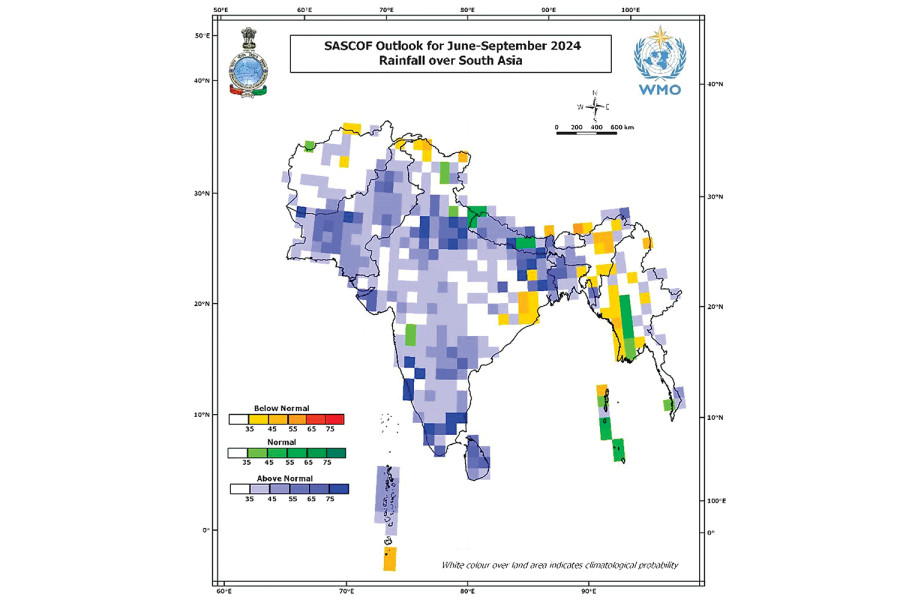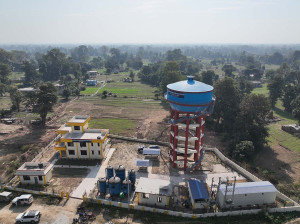Money
Nepal braces for above-normal monsoon this year
For Nepal, monsoon remains a major macroeconomic event that is closely watched by the government, farmers, businesses and consumers.
Sangam Prasain
Most of Nepal will likely experience above-normal monsoon rains, according to South Asian meteorologists, which experts say could bring a huge relief for Nepal’s ailing, farm-dependent economy.
According to a statement by the 28th Session of the South Asian Climate Outlook Forum released on April 29, above-normal rainfall is most likely during the monsoon season over most parts of South Asia except some areas over northern, eastern and northeastern parts of the region, where below normal rainfall is most likely.
“A normal or above normal monsoon results in a bountiful harvest, which lifts rural incomes and boosts spending on consumer goods,” said Hem Raj Regmi, deputy chief statistician at the National Statistics Office.
For Nepal, the monsoon remains a major macroeconomic event that is widely tracked by investors, the government, and consumers given its material impact on the economy.
“Nepal derives a significant portion of its earnings from rural areas and this has a direct impact on consumer spending patterns,” said Regmi.
Monsoon rains are critical for the farm sector, which accounts for nearly 25 percent of Nepal’s GDP and employs over 60 percent of the country’s population.
Agro experts say that the above-normal monsoon speeds up the transplantation rate and this translates to high crop yields. If production rises, food inflation tends to drop due to the demand-supply mechanism in the market.
“Furthermore, the monsoon helps to recharge the groundwater level and water reservoirs, as well as the rivers which are pivotal to power generation,” said Regmi.
Sunil Pokharel, spokesperson at the Meteorological Forecasting Division, said if the monsoon is distributive, it’s good for all, including the farm sector. “There is no doubt that a good monsoon boosts the country’s output but if there is excess rain, it’s also a disaster for a country like Nepal.”
Landslides triggered by heavy rains in Nepal cause tremendous damage to life, property, infrastructure and environment.
In Tarai, tens of thousands of people are affected by floods every year. In the hills, landslides are the main natural hazards occurring very frequently, mostly during monsoon.
“Major disasters are associated with high-intensity rain. So, we have to be more cautious this year if there is above-normal rainfall,” said Pokharel.
The normal monsoon onset and withdrawal dates are June 13 and October 2 respectively.
Last year, monsoon entered eastern Nepal on June 14 and withdrew from eastern Nepal on October 15, delayed by thirteen days.
Monsoon is crucial for the Rs5.70-trillion economy, as it brings nearly 80 percent of the rain needed by farms, besides replenishing reservoirs and aquifers.
Only a third of Nepal’s farms have round-the-year irrigation and the rest depend on rain.
This fiscal year, Nepal's agriculture sector has been projected to grow by 3.05 percent, according to the National Statistics Office. And the economy, which is at the mercy of agriculture output, would grow by 3.87 percent this fiscal year ending mid-July.
Summer crops, mainly paddy, are the major income source for more than half of the population. Rice is a major contributor to the economy and the planting season starts next month.
According to Regmi, paddy alone accounts for 5 percent of Nepal’s GDP.
Last year, despite the El Niño phenomenon, Nepali farmers harvested a record 5.72 million tonnes of paddy, up 4.33 percent, according to the statistics of the Ministry of Agriculture and Livestock Development.
This year, South Asian meteorologists say, there is a strong consensus among the experts that La Niña conditions are likely to develop over the equatorial Pacific during the second half of the southwest monsoon season. It is also recognized that the La Niña conditions are generally associated with the normal to above normal southwest monsoon rainfall over most parts of South Asia.
El Niño and La Niña are two opposing climate patterns that break these normal conditions. Global temperatures typically increase during an El Niño episode and fall during La Niña. El Niño means warmer water spreads further and stays closer to the surface. This releases more heat into the atmosphere, creating wetter and warmer air.




 19.12°C Kathmandu
19.12°C Kathmandu













